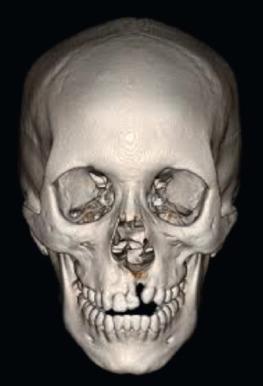Physical Address
304 North Cardinal St.
Dorchester Center, MA 02124
Cleft lip and palate provides a four-dimensional reconstructive challenge, encompassing all tissue types and extending across the age spectrum from infancy into adulthood. This chapter focuses on alveolar bone grafting, a component of cleft reconstruction typically performed in early adolescence. The goals of alveolar bone grafting are to establish a solid bony foundation for the erupting adult dentition, to stabilize the maxilla into a single stable arch, and to simultaneously close remaining soft tissue defects such as oronasal fistulae. Although the ideal timing and technique for bone grafting remain controversial, this chapter will review the most commonly advocated techniques, with a step-by-step guide to performing the procedure.
The treatment of children with cleft lip and palate extends beyond their initial cleft repairs in infancy and includes a stepwise staged reconstruction. This is true throughout the world, including in developing countries. The defect in complete cleft lip and palate is a complex three-dimensional malformation that includes soft tissue as well as bony disruption ( Fig. 3.5.1 ). Failure of fusion of the medial and lateral palatine processes causes a bony defect that can extend from the pyriform rim and along the nasal floor. Oronasal clefts can present as a range of deformities ( Fig. 3.5.2 ), and no two clefts are exactly alike. Depending on the anomaly, the surgical timeline may include cleft lip repair, cleft palate repair, cleft lip revisions, cleft palate revisions and speech surgery, alveolar bone grafting, rhinoplasty, and possible orthognathic surgery. The number of procedures for children with a complete cleft lip and palate may be seven or more by age 18.


Although the cleft lip and palate are ideally repaired within the first year of life, children with an alveolar cleft will require bone grafting in early adolescence. Alveolar bone grafting supports the erupting adult dentition, stabilizes the maxillary arch, and allows for closure of oronasal fistulae. There are many potential donor sites for corticocancellous bone including the ilium, the tibia, the mandibular ramus, and the cranium. Although each arguably has pros and cons, the most commonly used is the ilium, and we will limit ourselves to a discussion of this donor site for the purposes of this chapter.
Children with cleft lip and palate can have a number of dental and orthodontic anomalies that may challenge the reconstructive surgeon and orthodontist. Typically, children will have asymmetrical delays in dental eruption as well as crowding; maxillary arch collapse; lingual crossbite; supernumerary, ectopic, or missing teeth; and oronasal or labionasal fistulae. Coordinated treatment with a pediatric dentist, orthodontist, and plastic surgeon optimizes outcomes while ideally minimizing the number of surgical interventions.
Most children with cleft lip and palate are non-syndromic, but hundreds of syndromes have been found to present with cleft lip and palate as part of their phenotype. These syndromes should be identified and understood before surgery because there are added surgical risks.
Become a Clinical Tree membership for Full access and enjoy Unlimited articles
If you are a member. Log in here